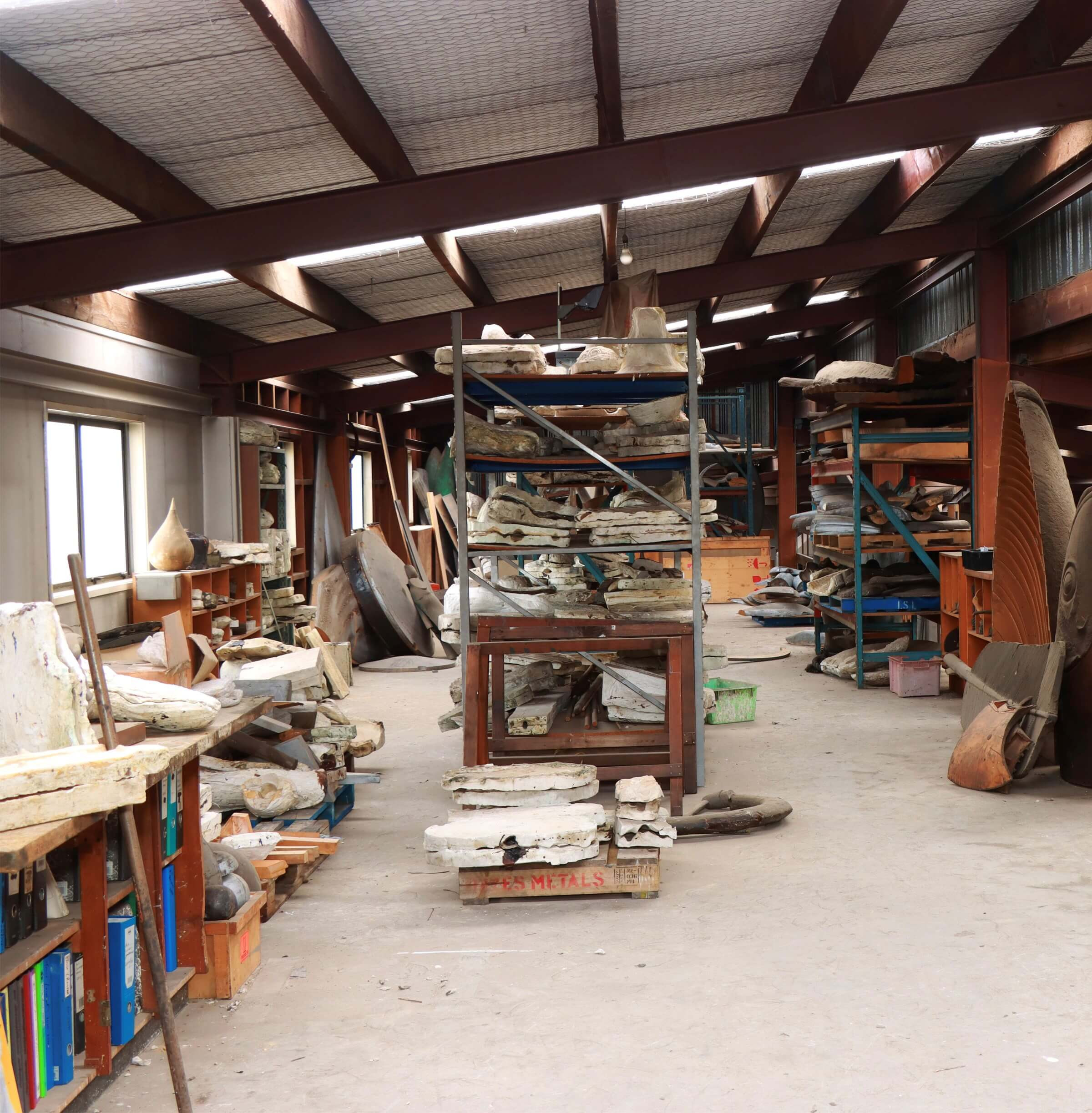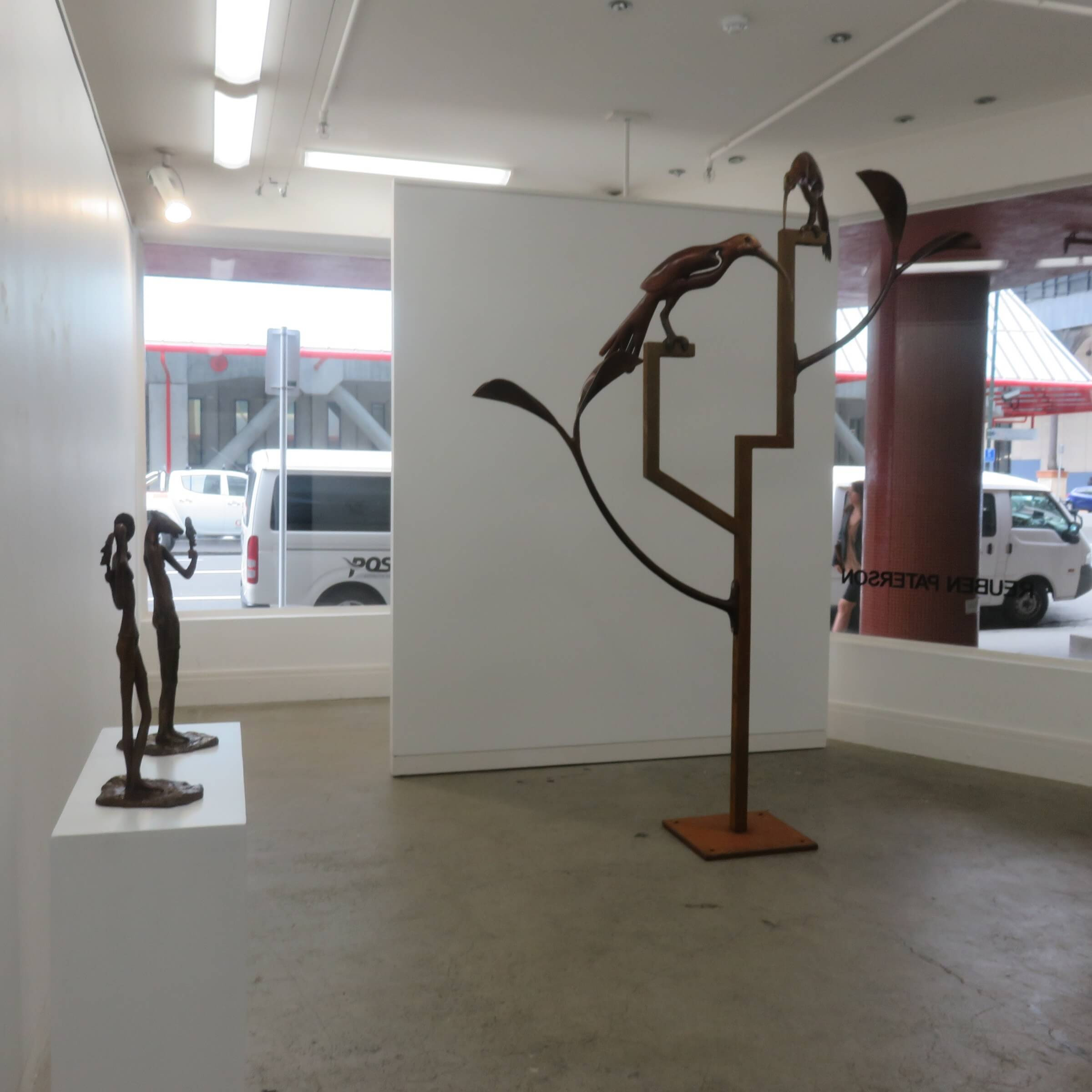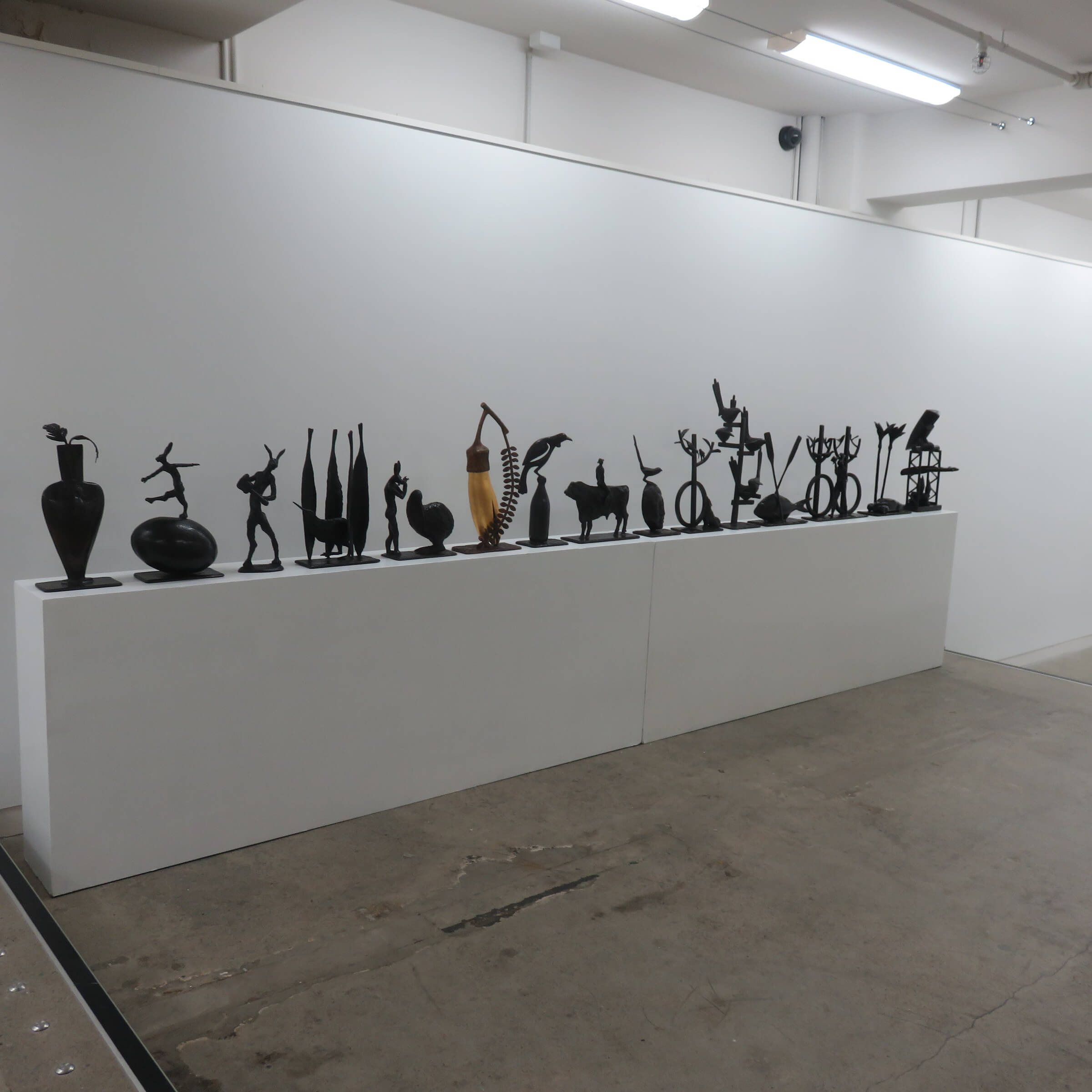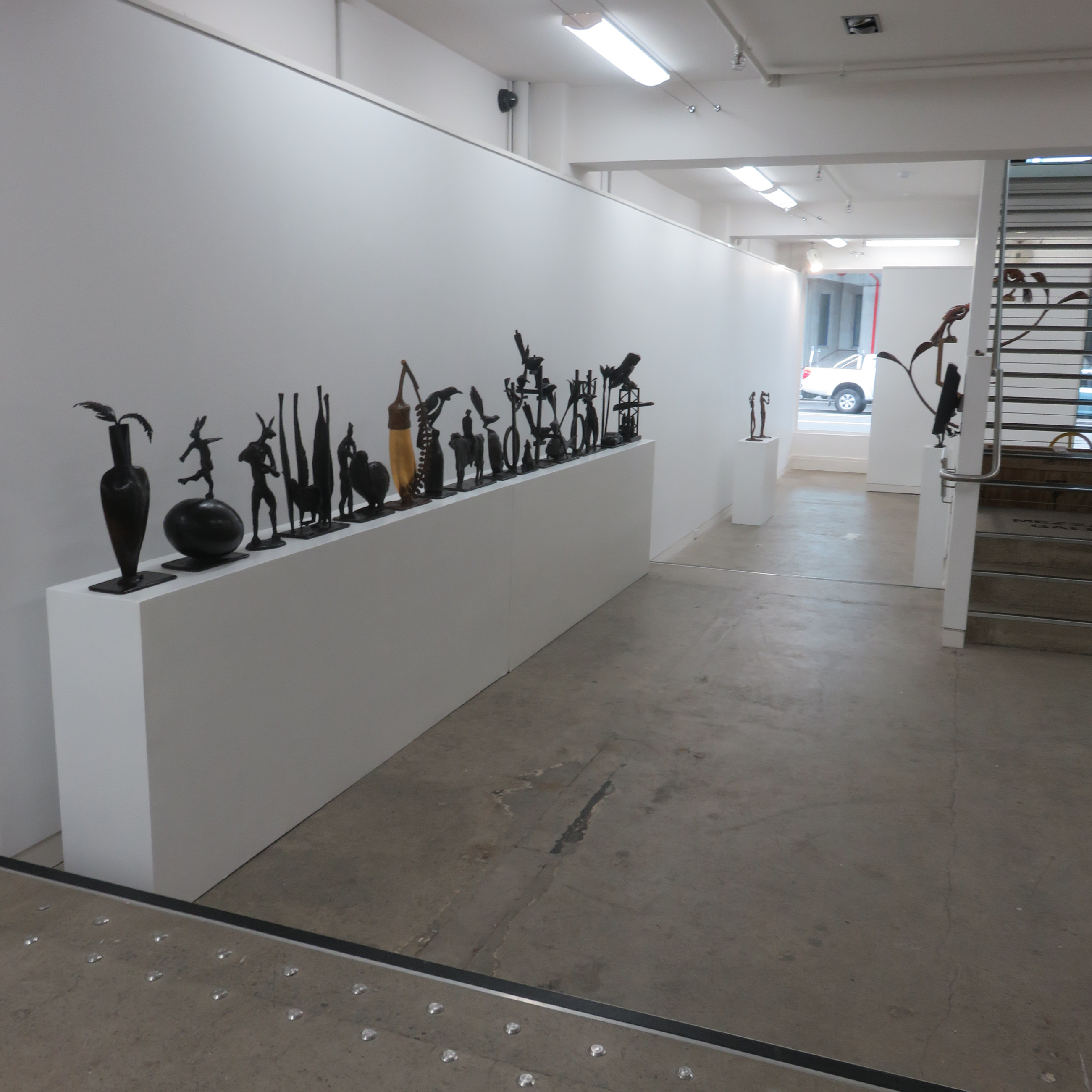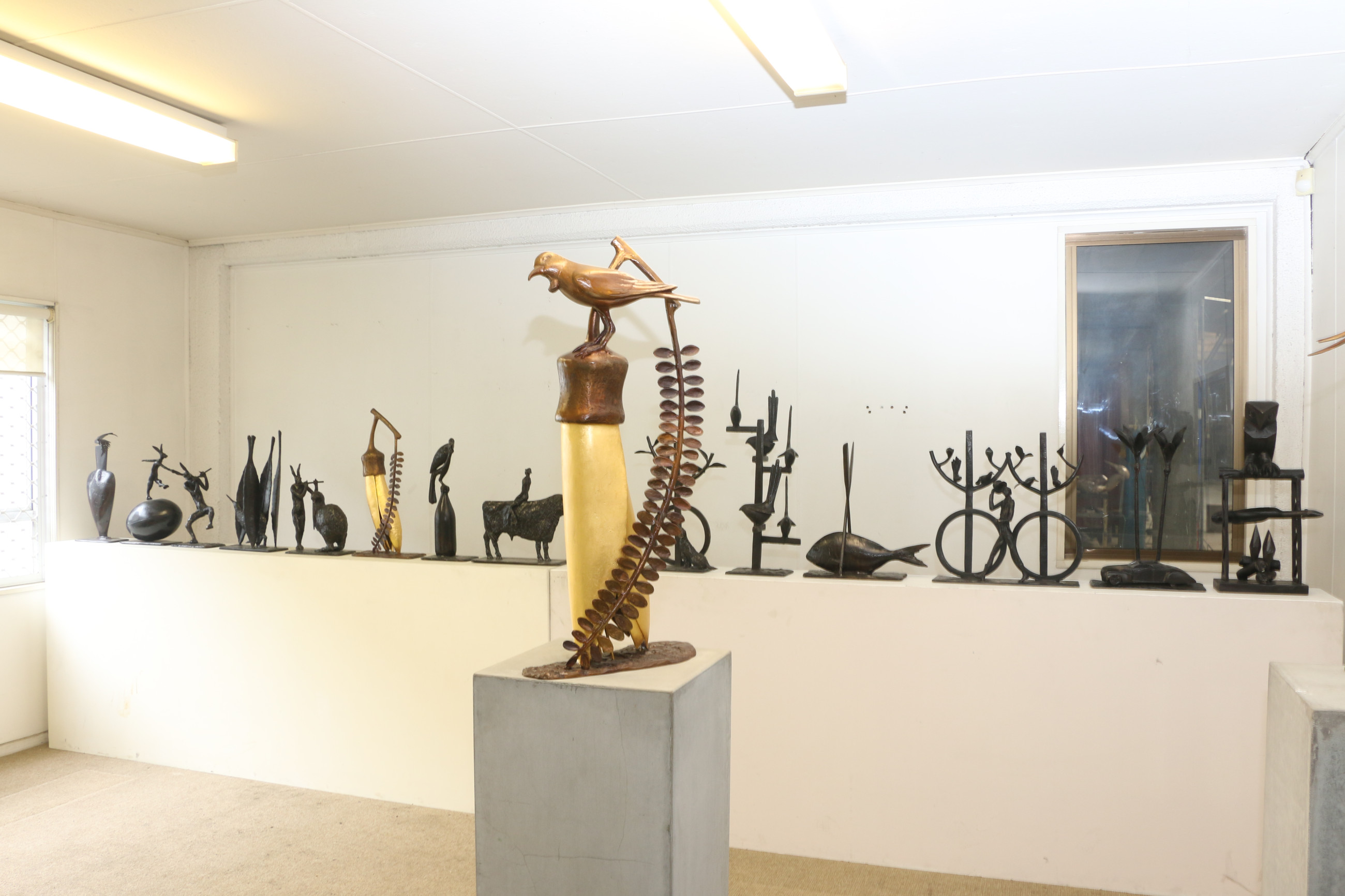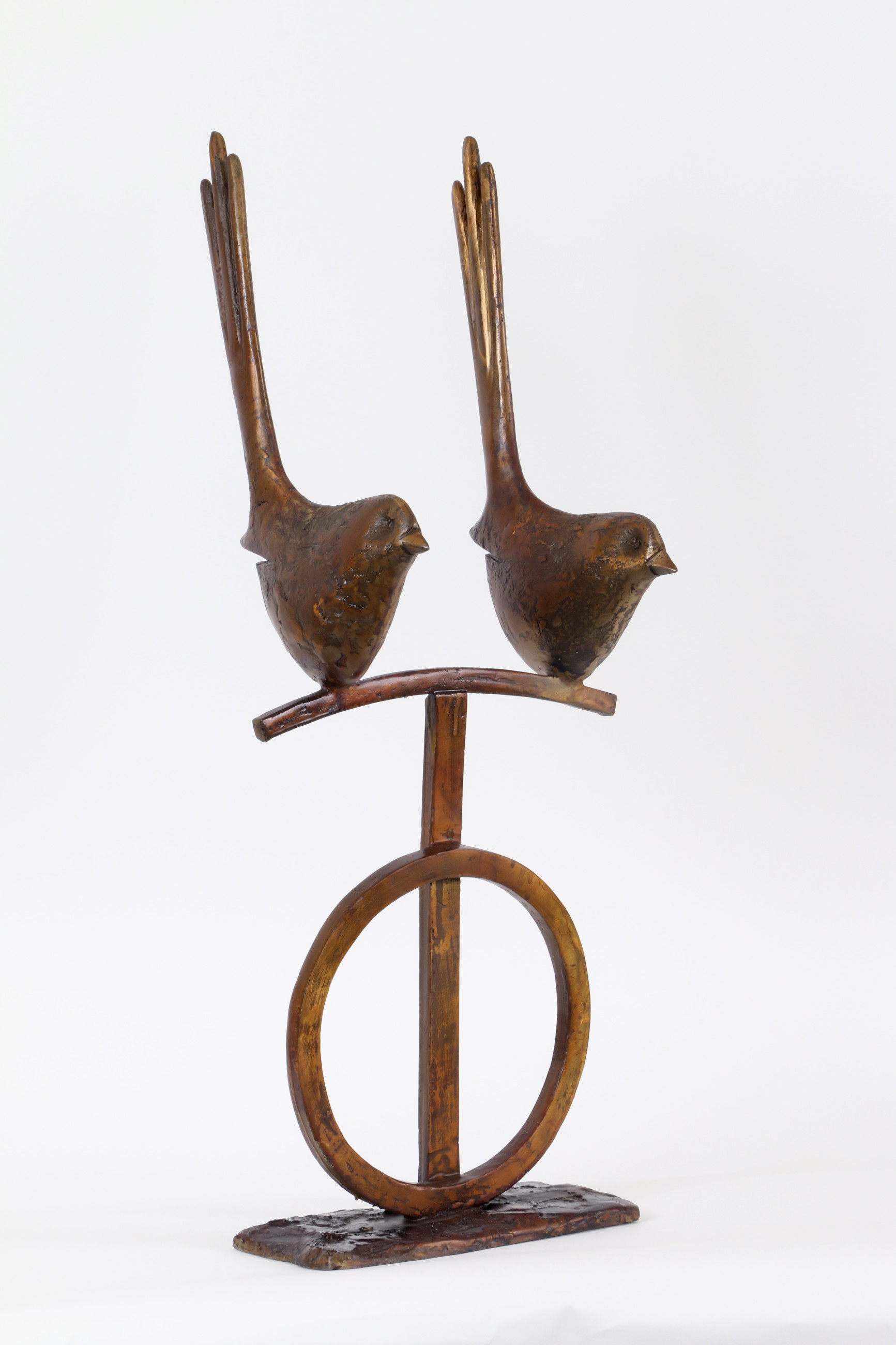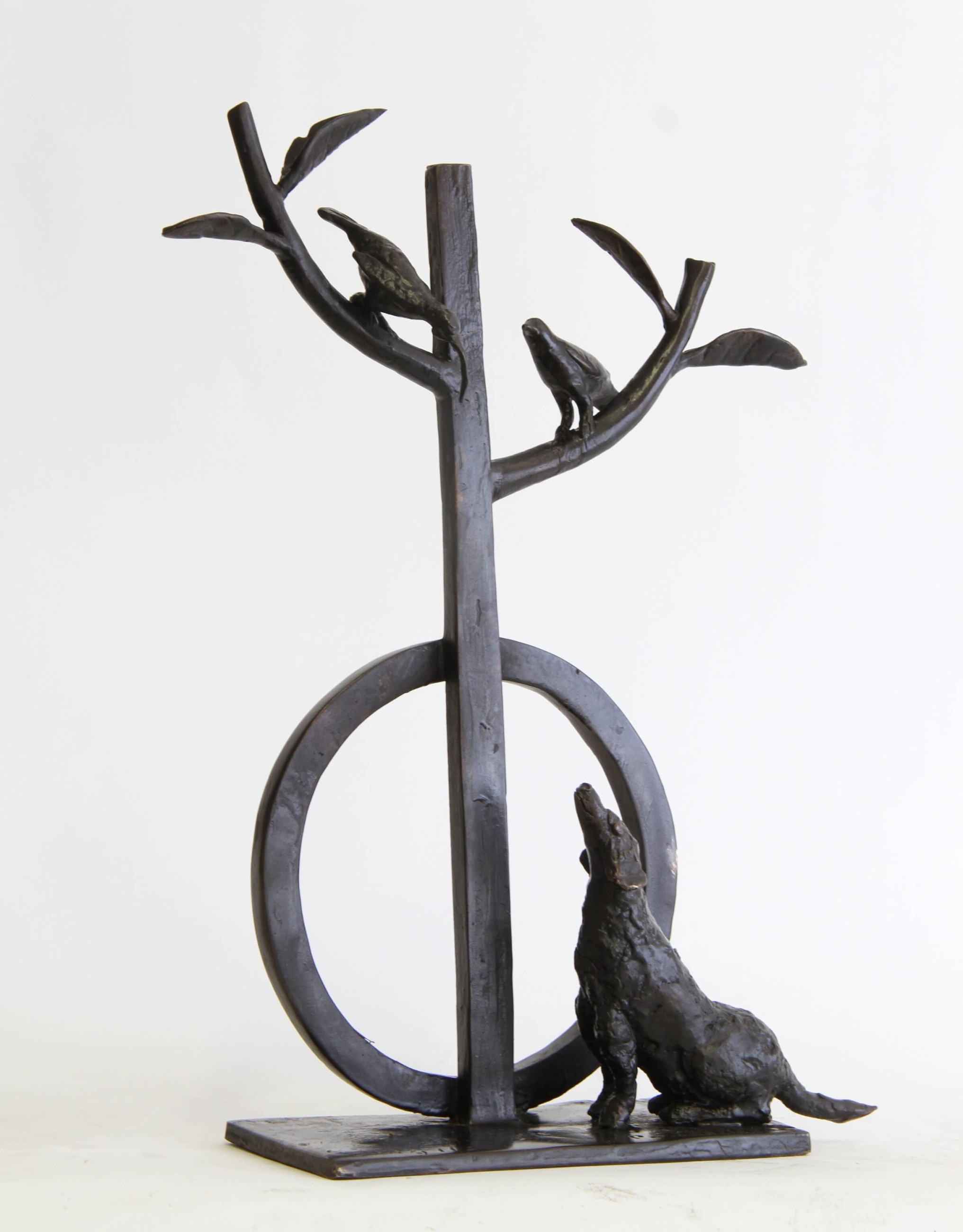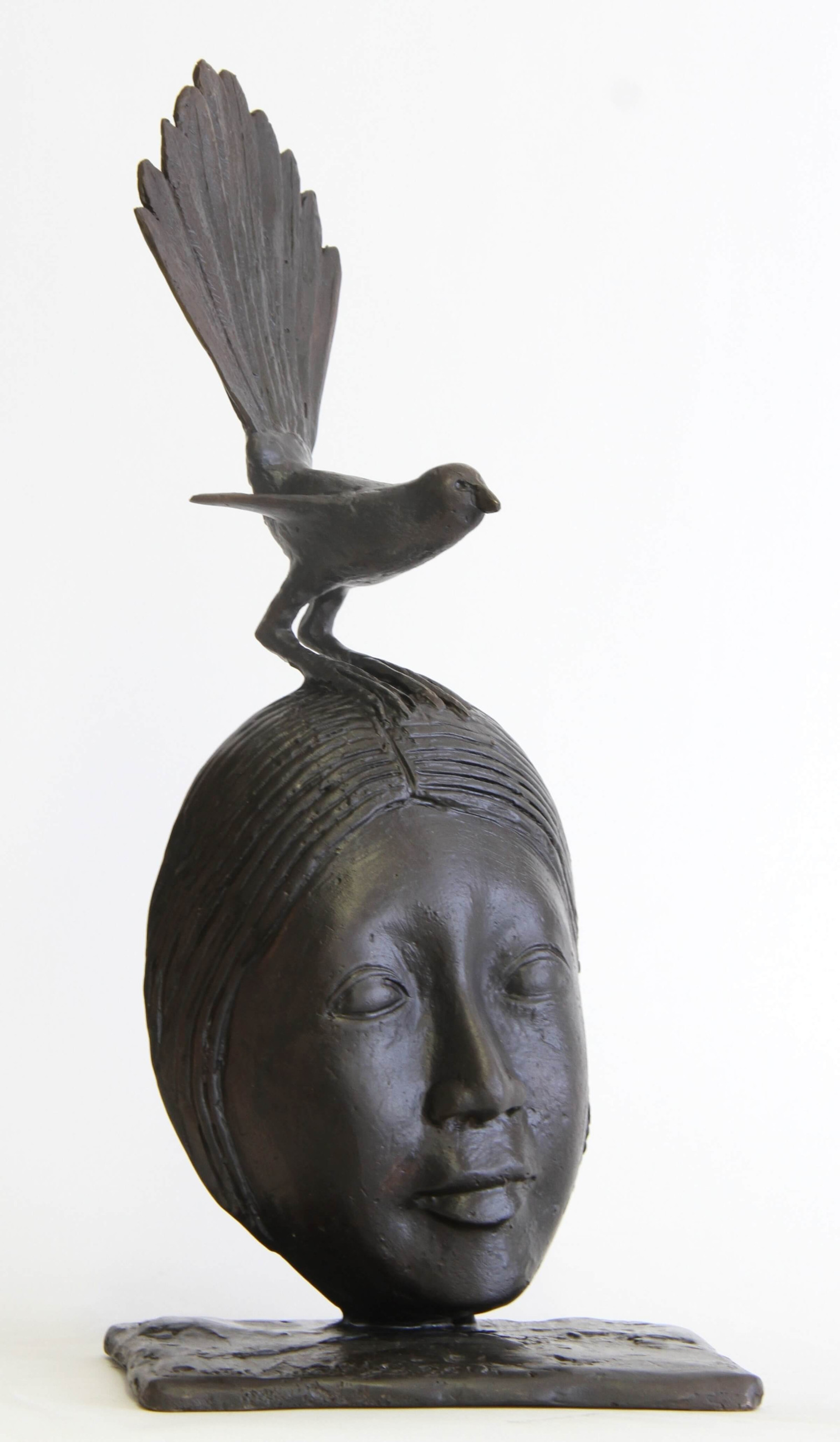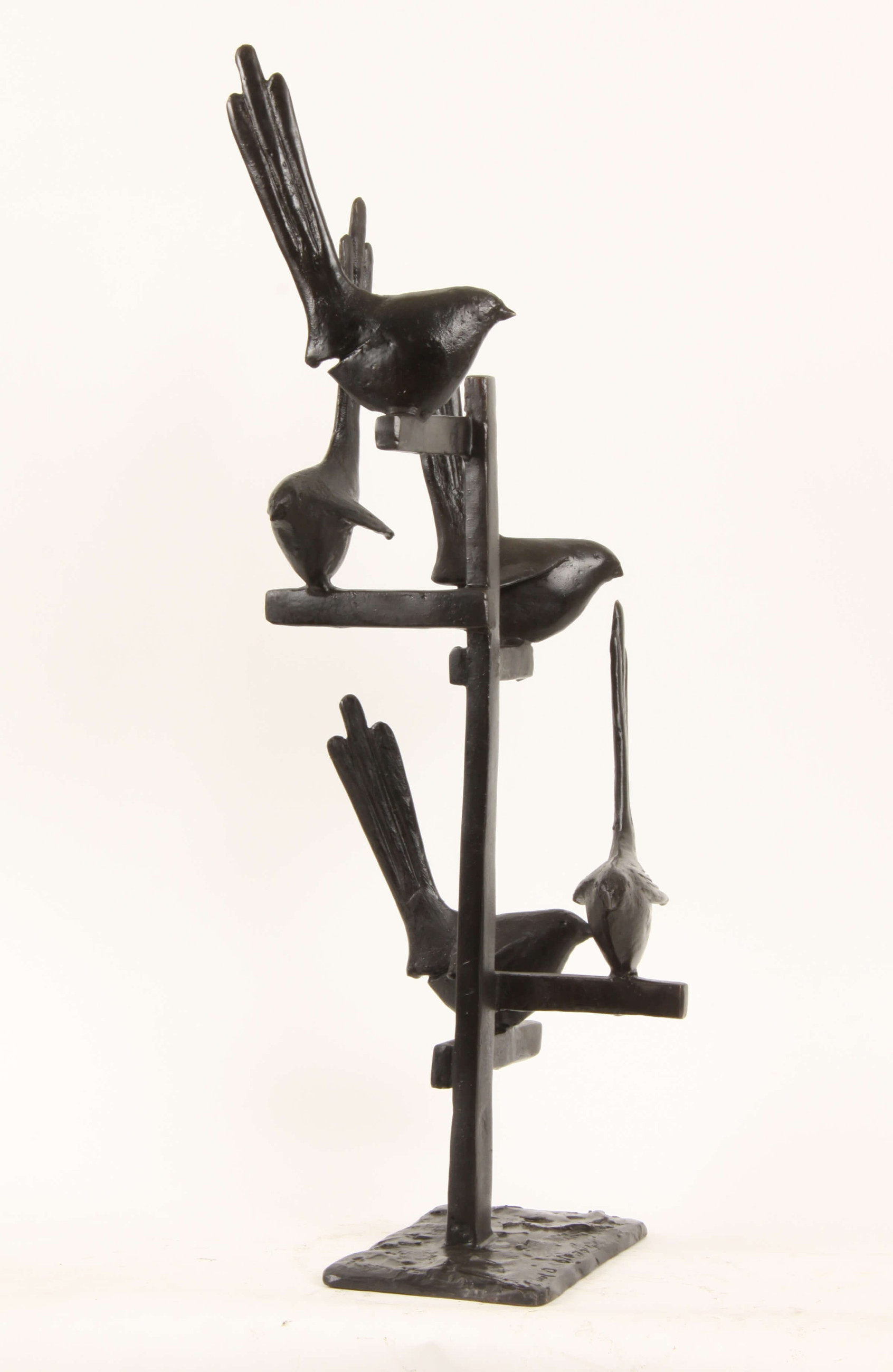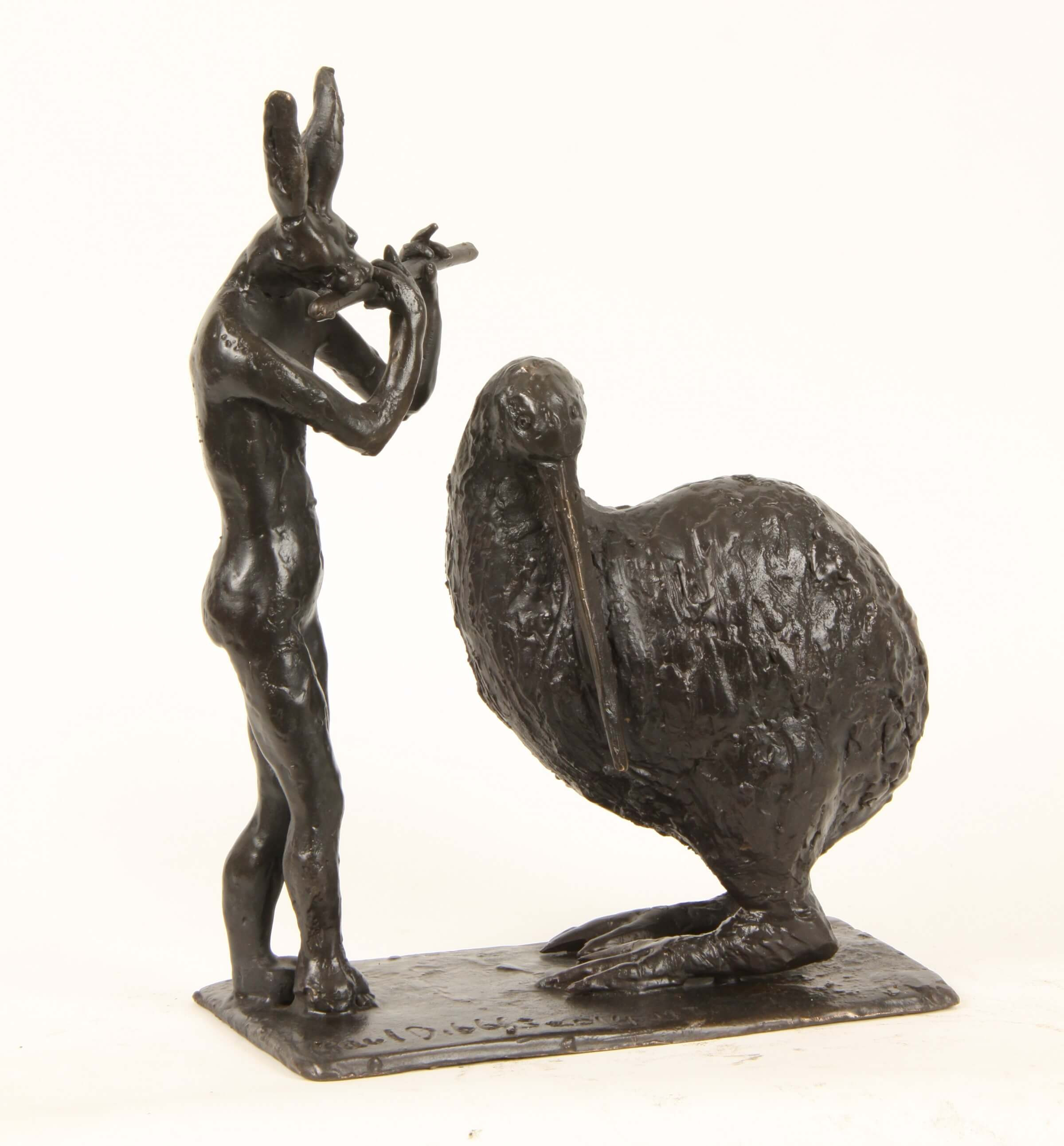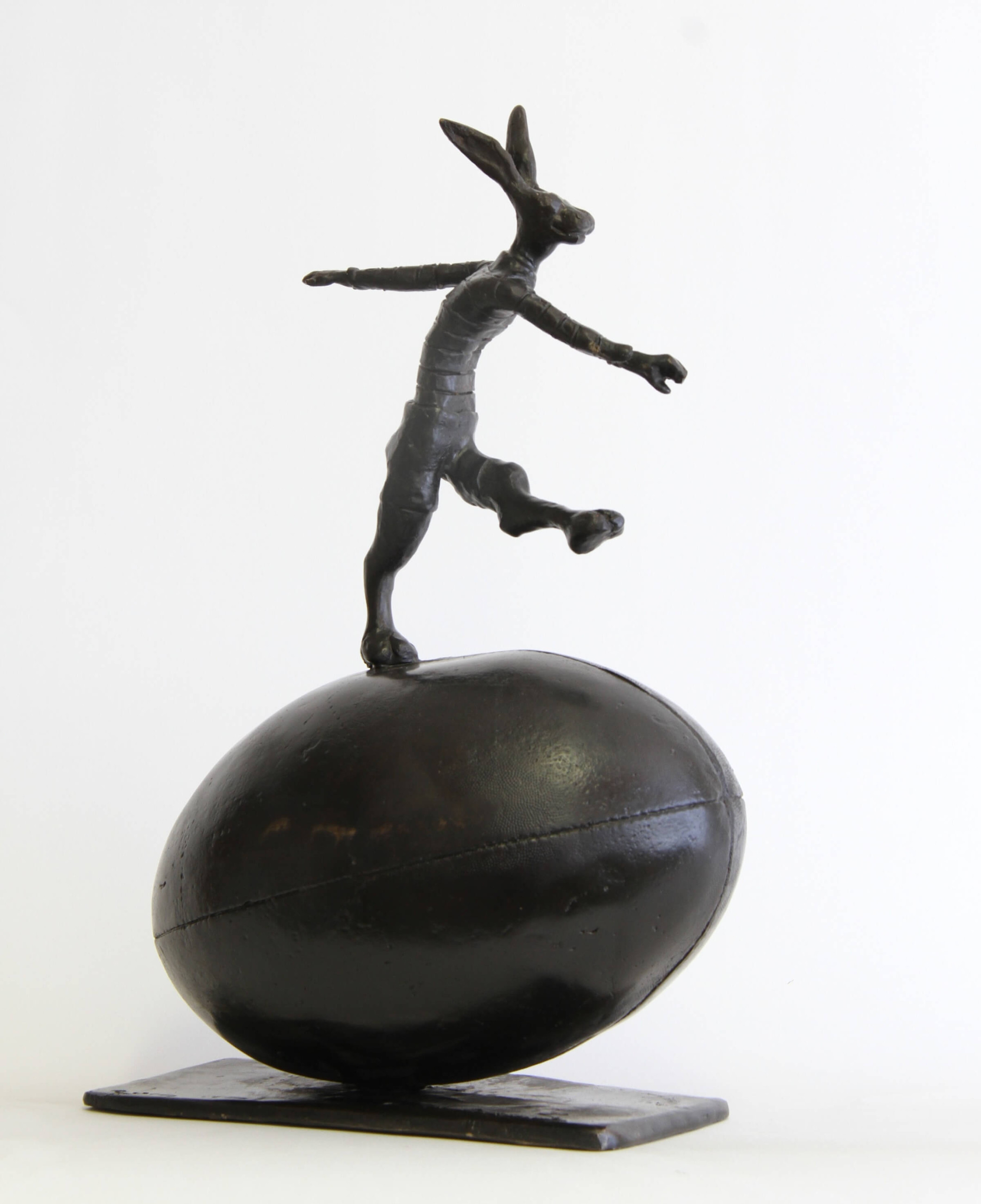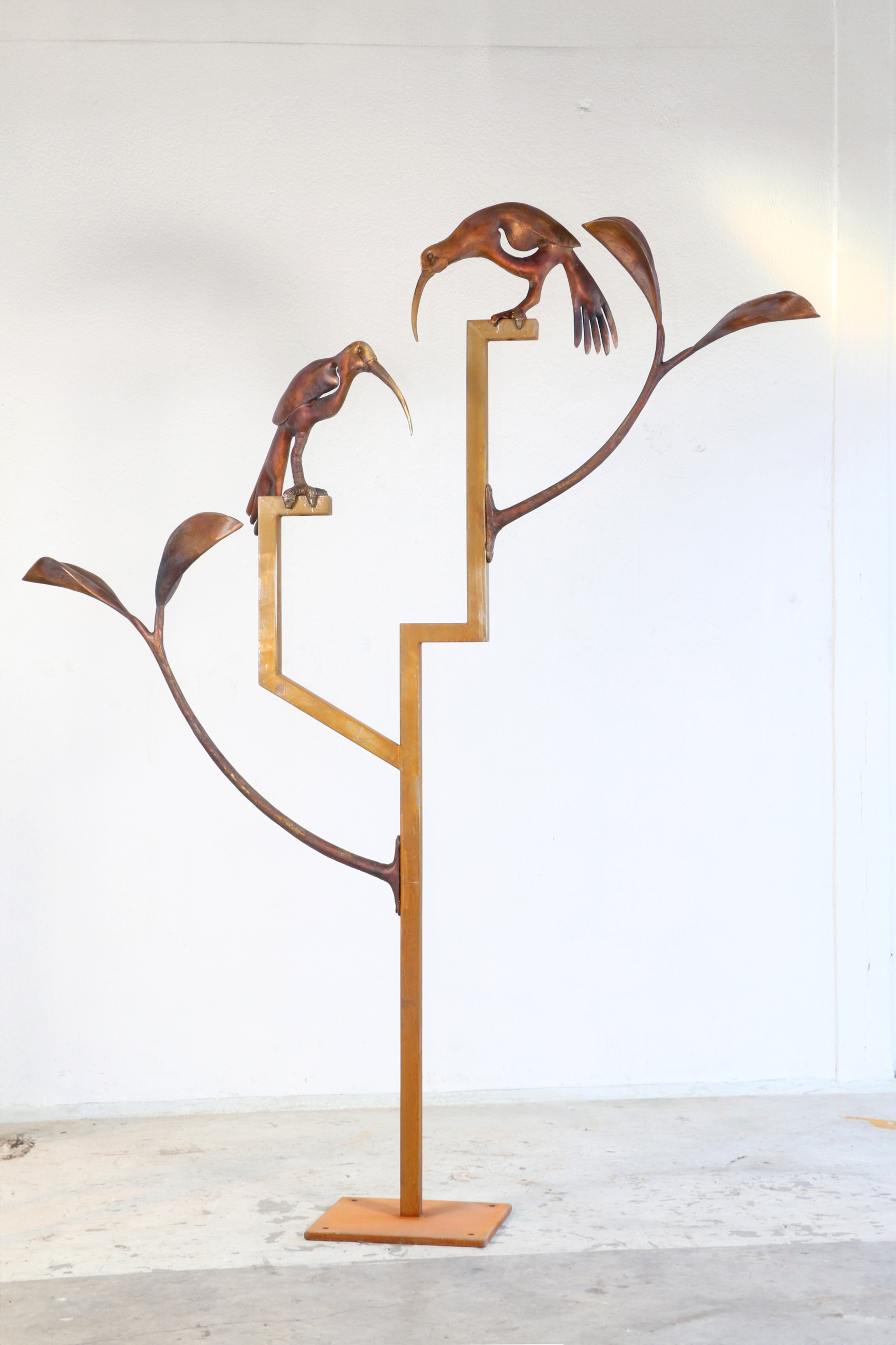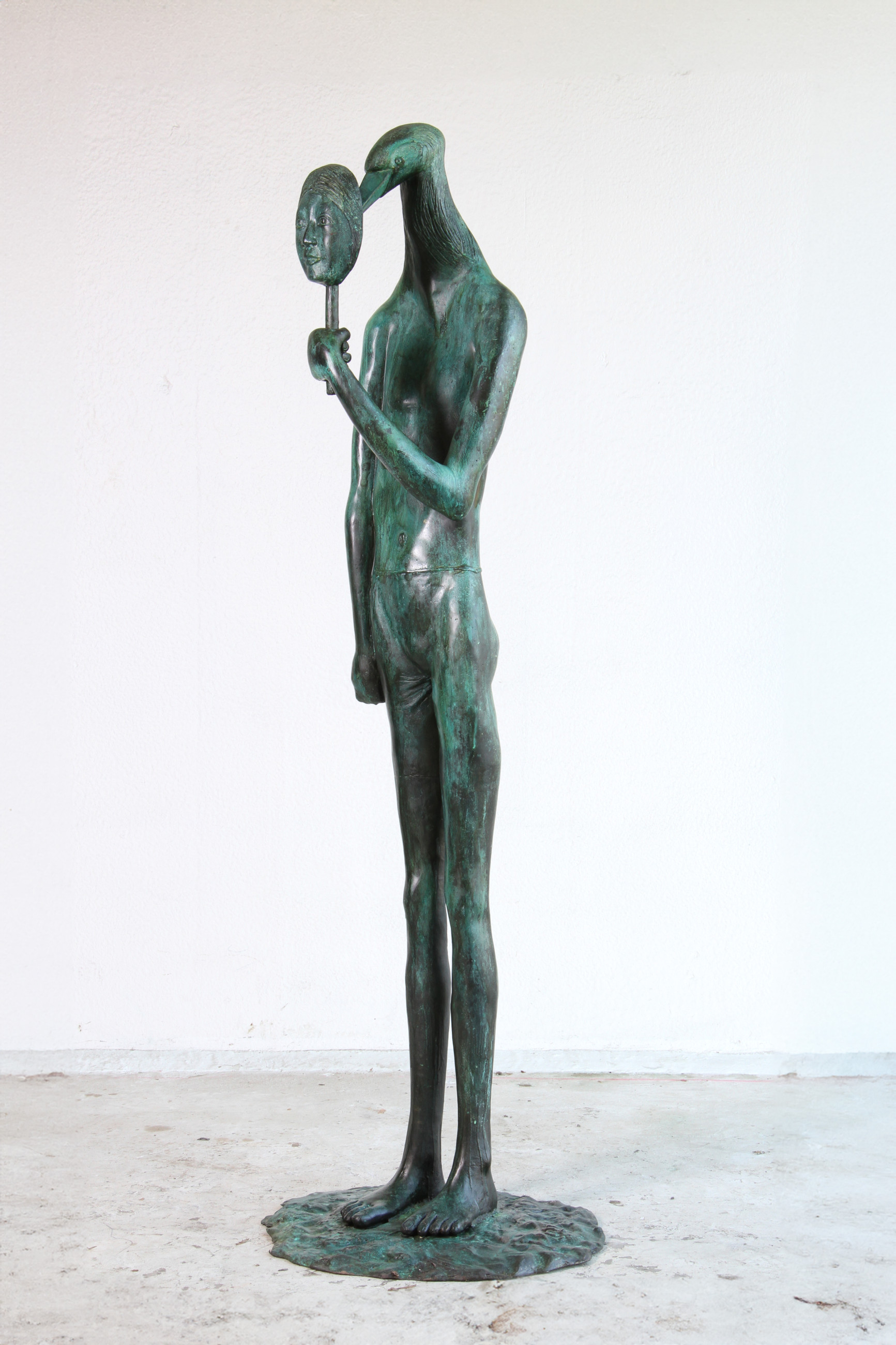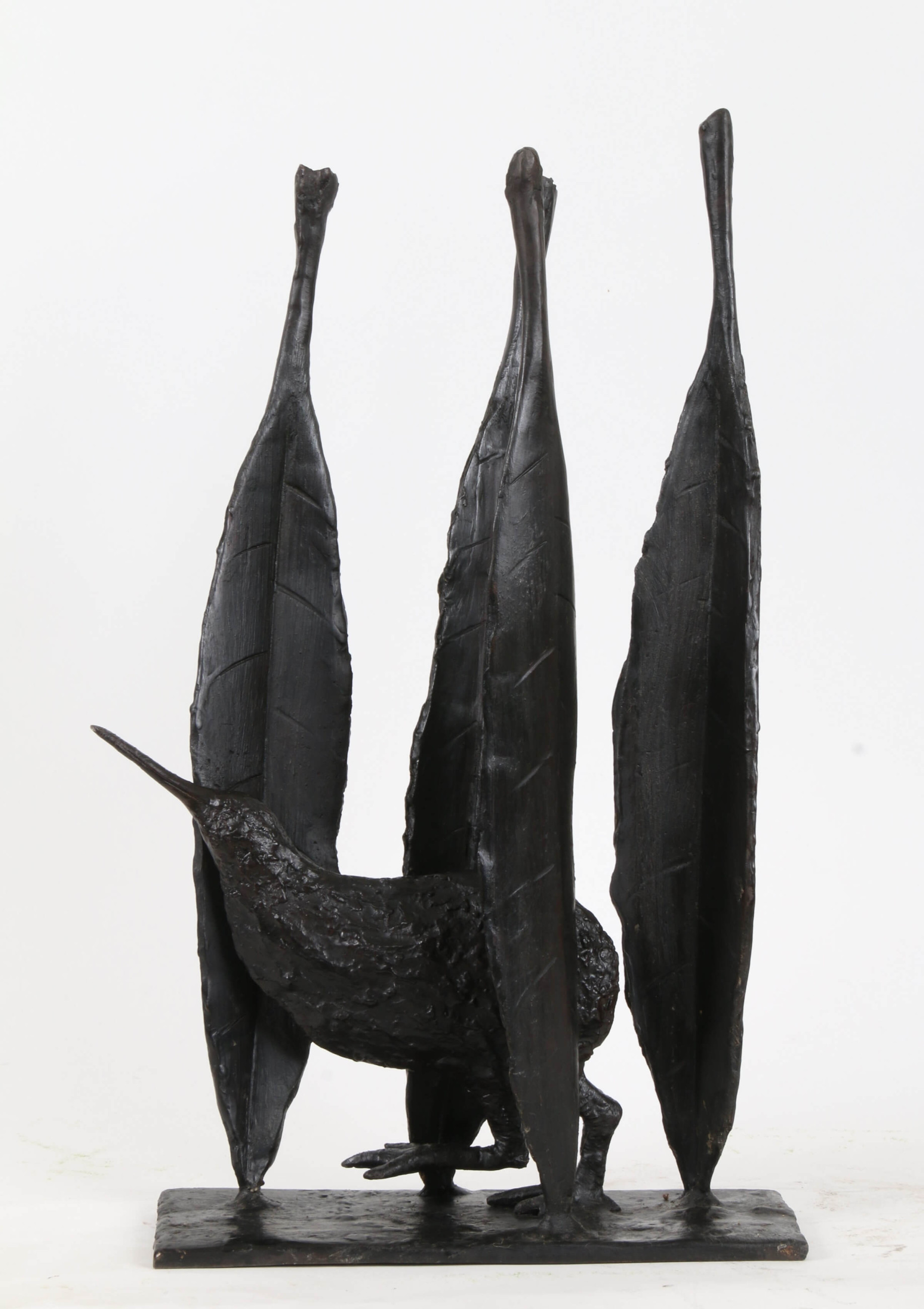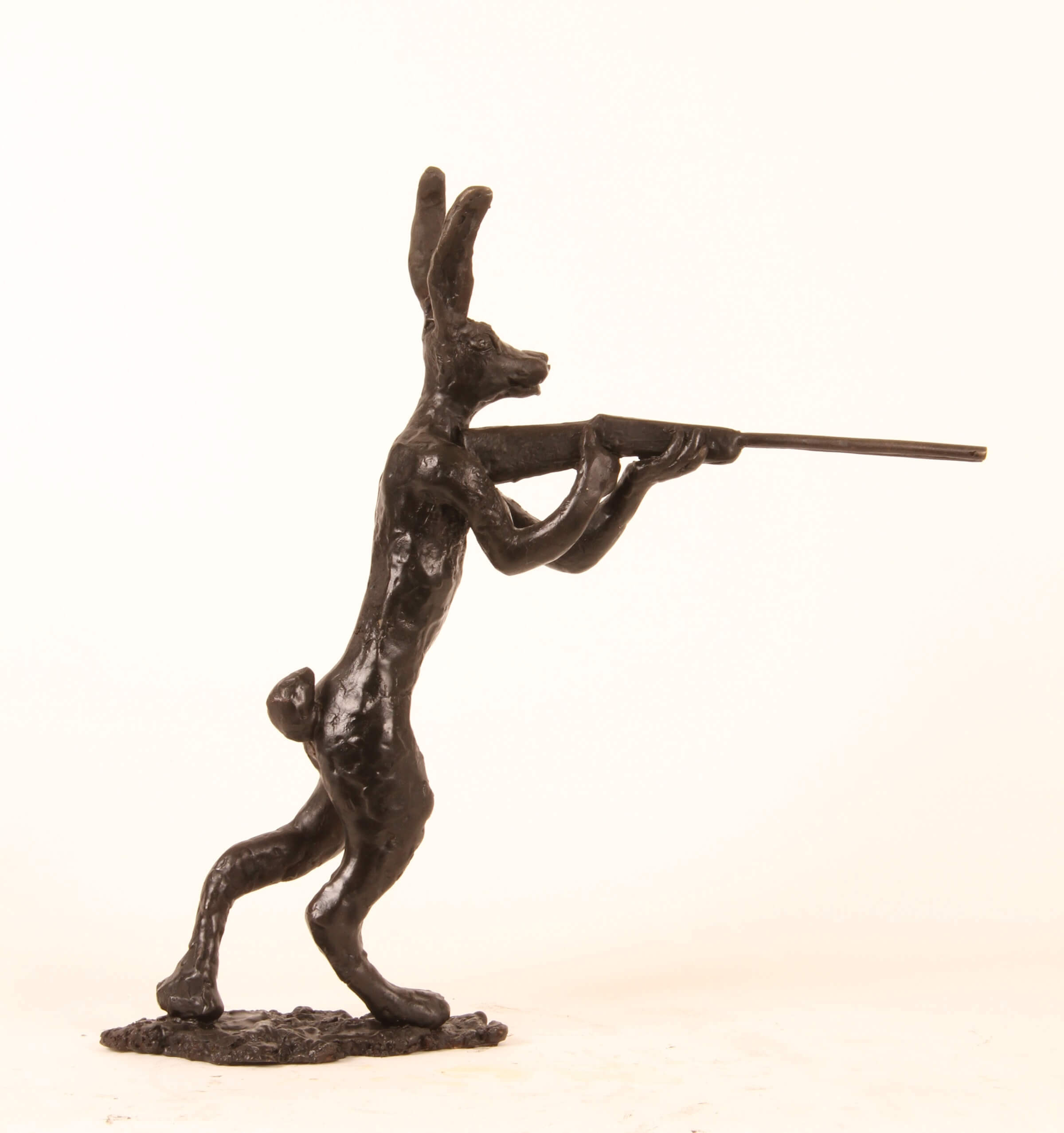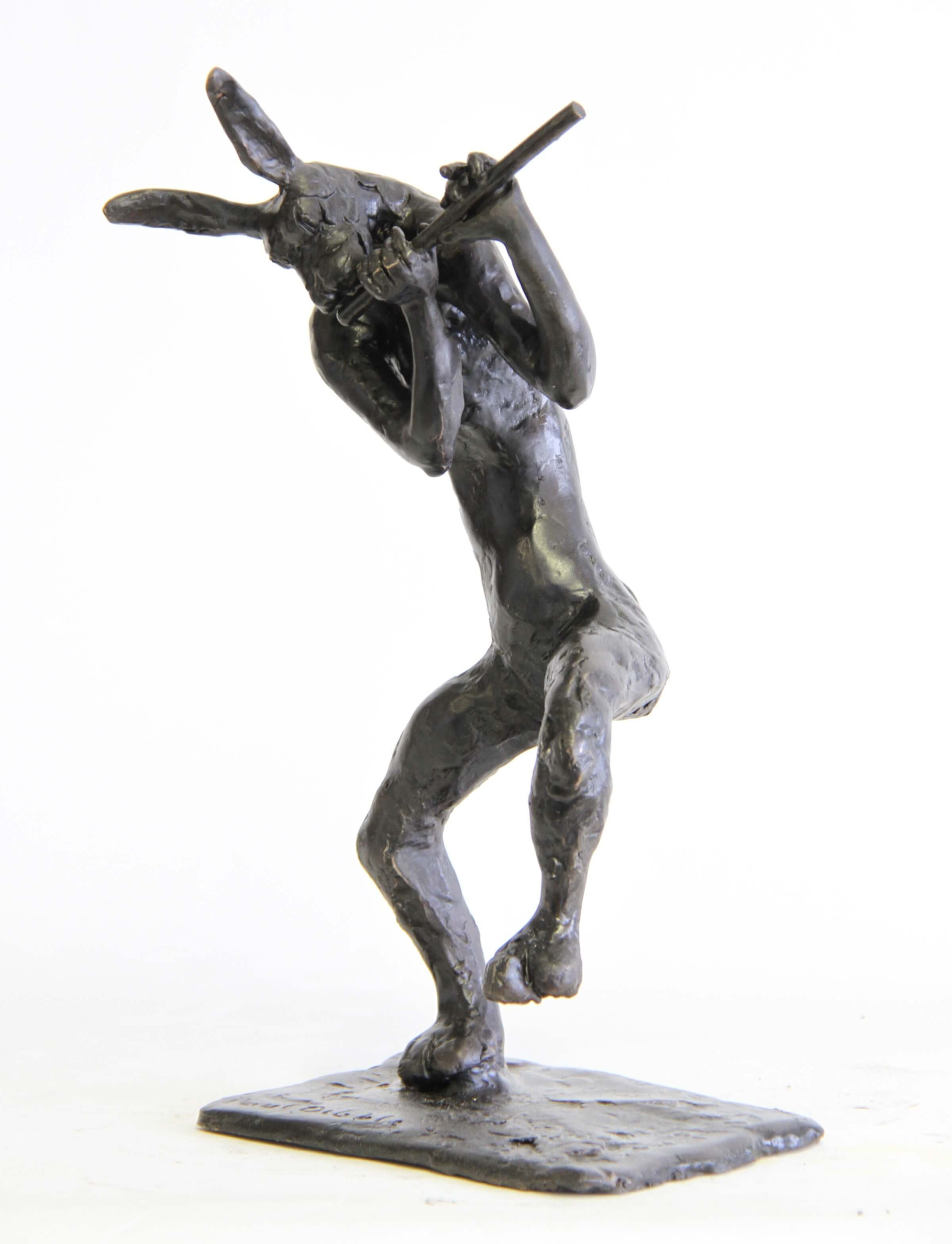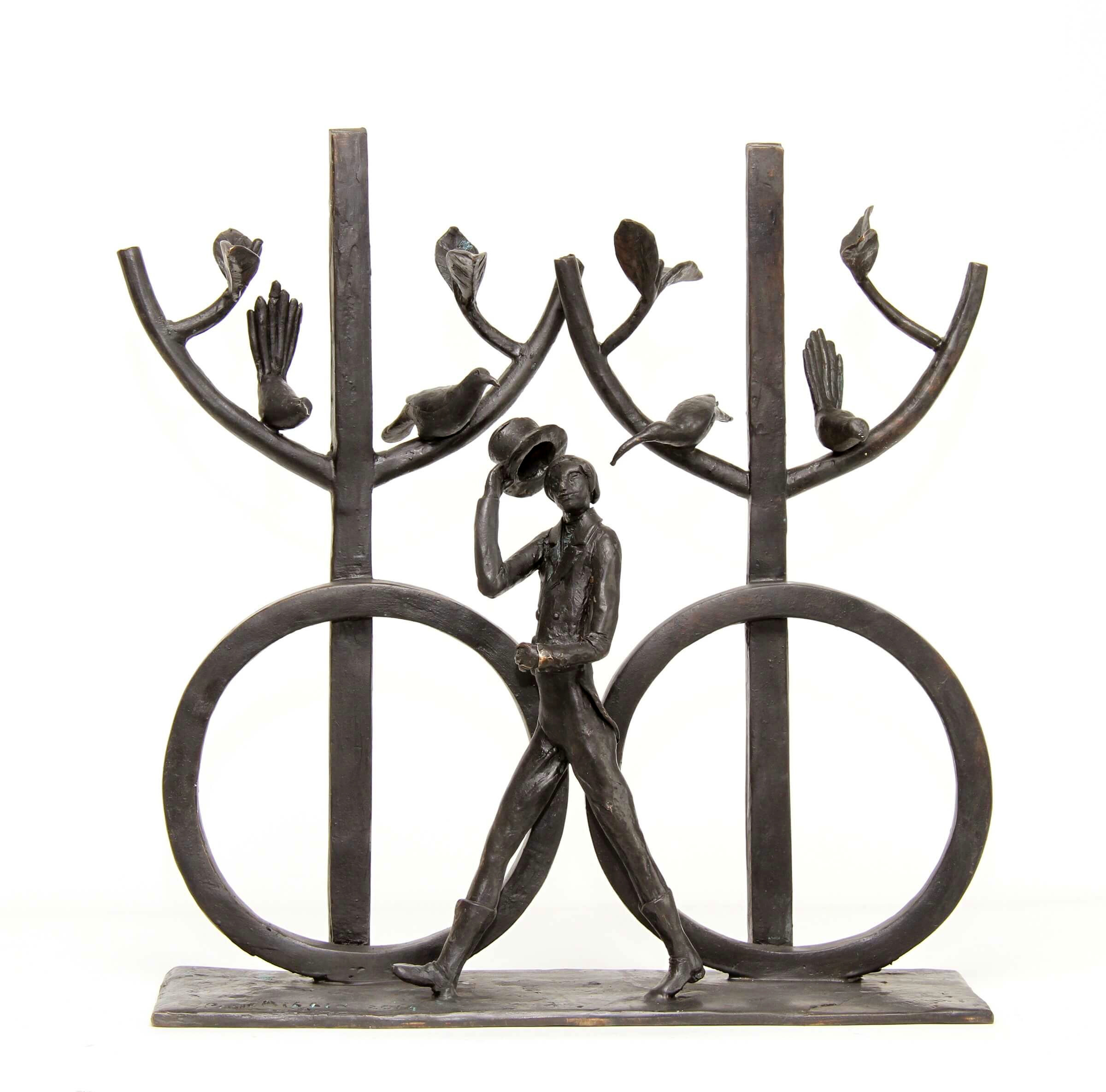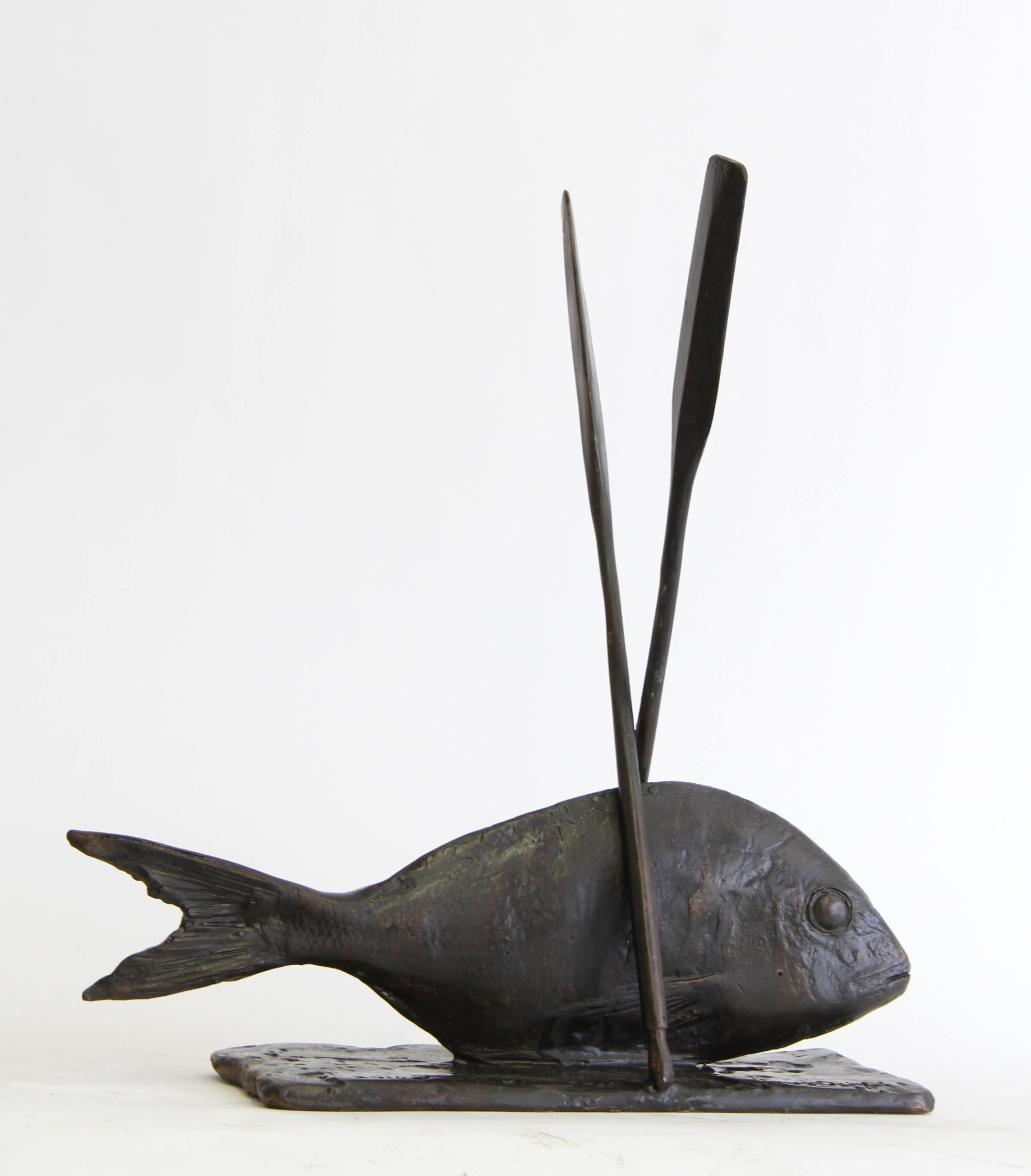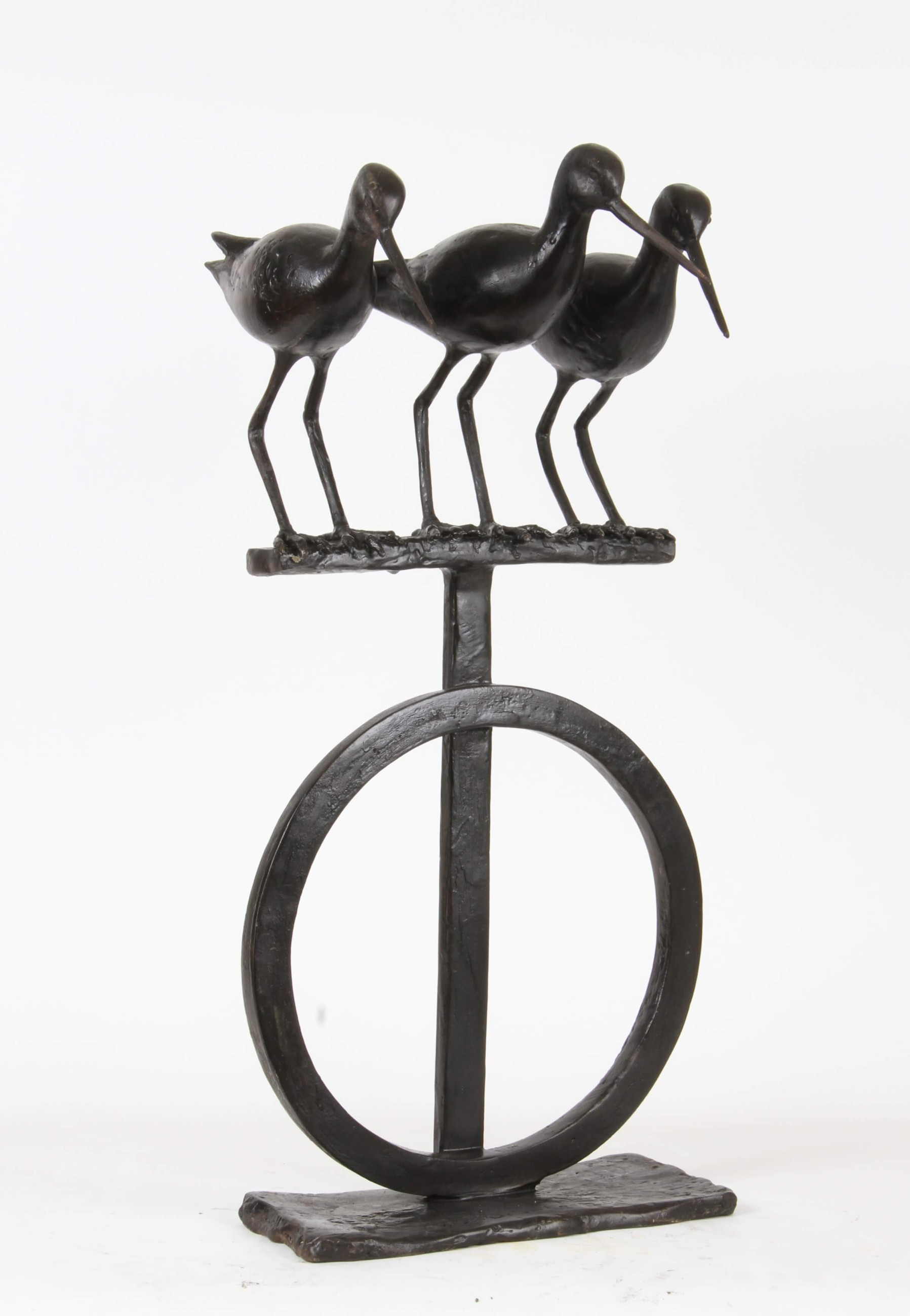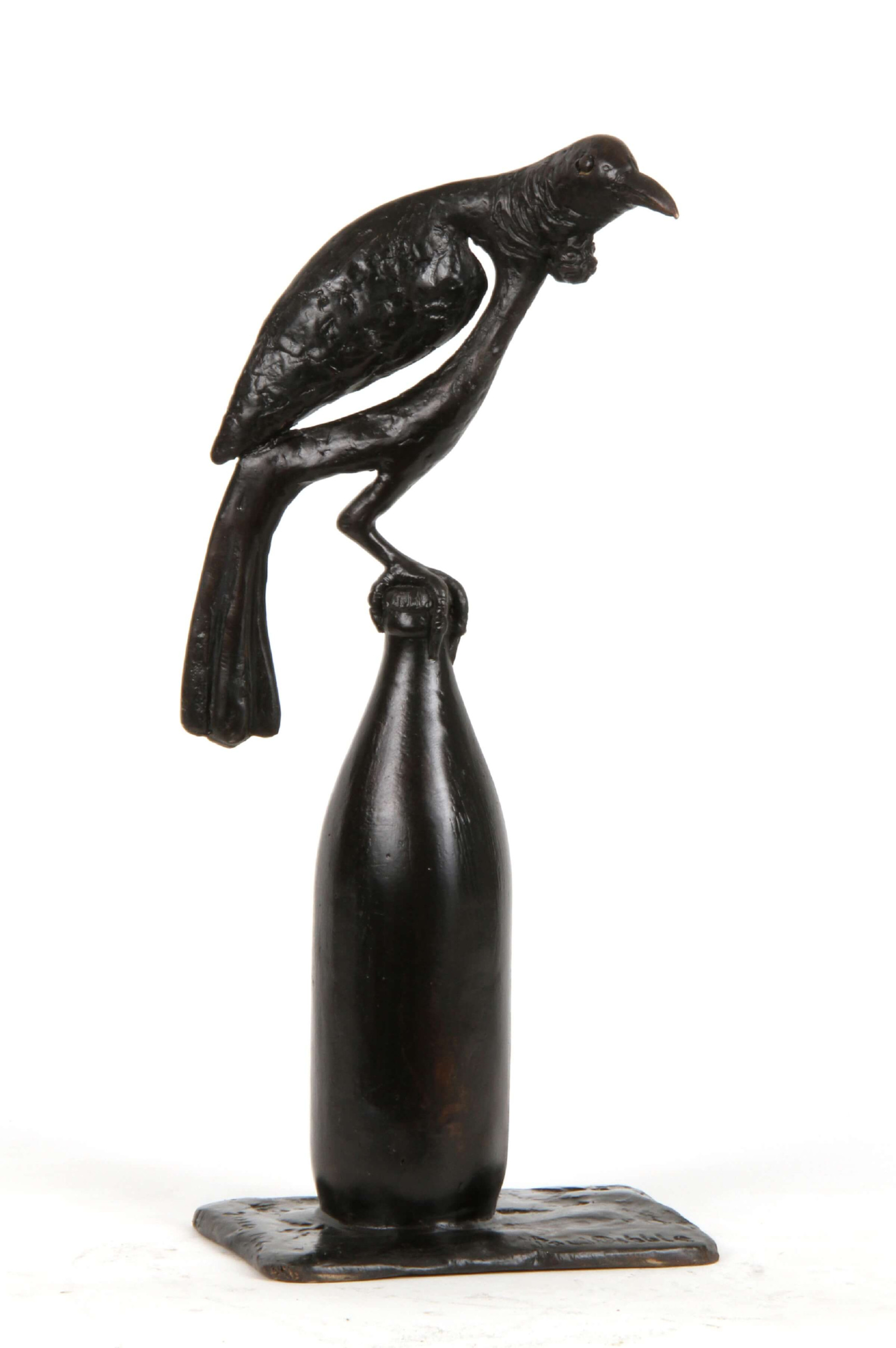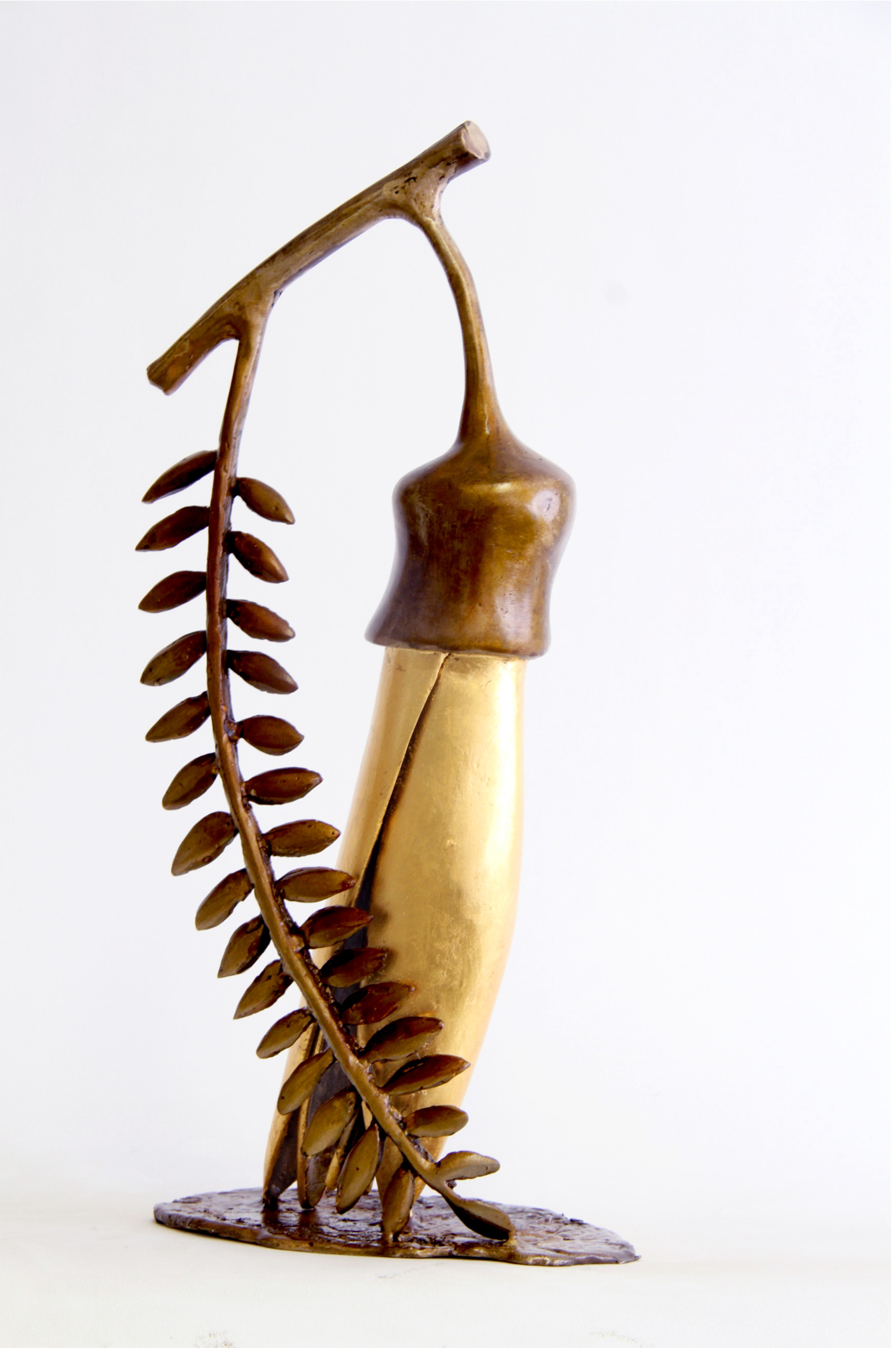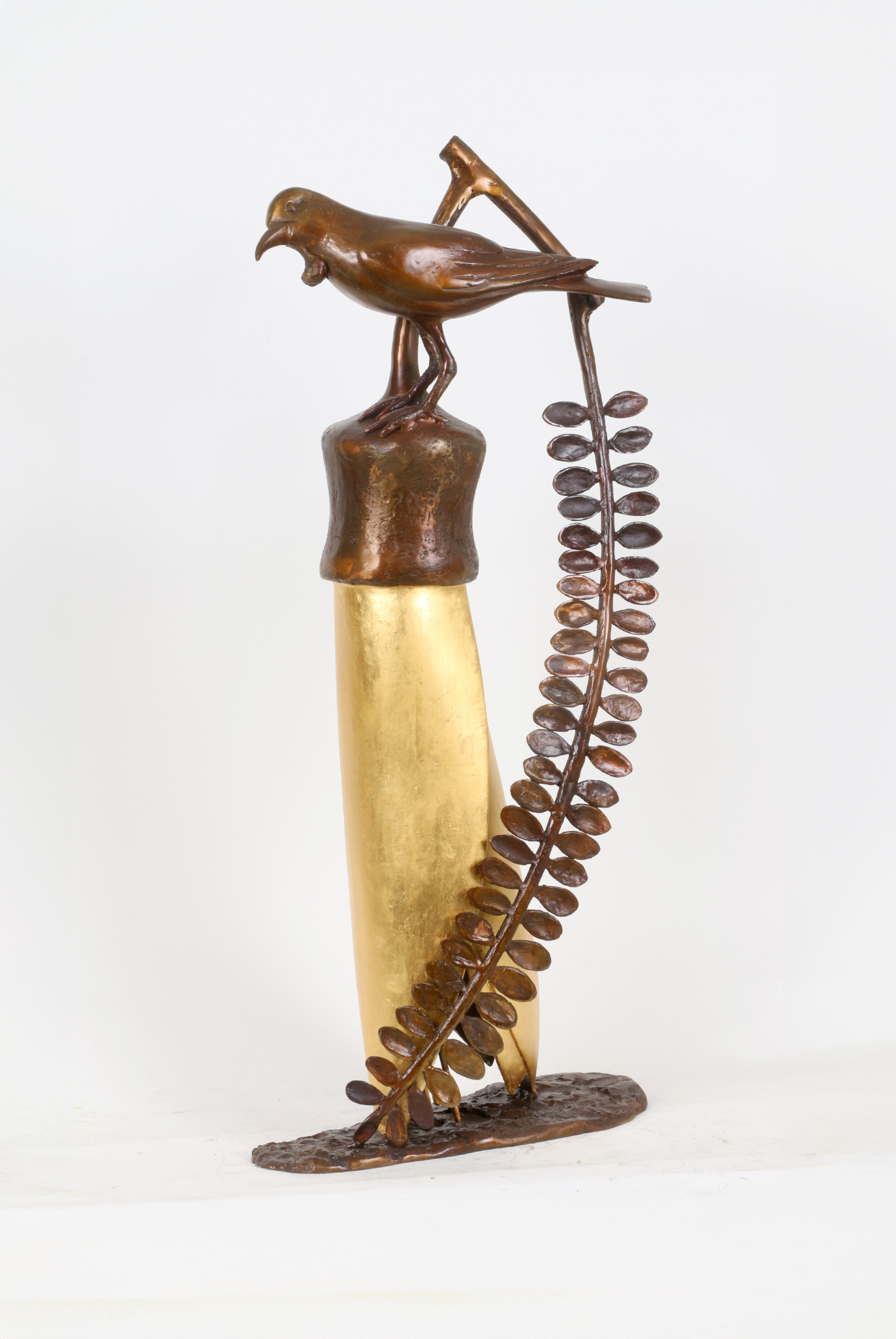October 27 - November 20, 2015 On The Road Again
October 27 - November 20, 2015 On The Road AgainSolo, Page Blackie Gallery, Wellington
Text
They could be thought of as a row of sculptural “snapshots”, held moments, a sequential row of visual images, ideas or musings by the artist – these are the tableaux created by Paul Dibble. This is a name given to a method of working, making works which are individual pieces yet part of a whole.
The imagery suggest an interest in peculiarities, odd instances and nostalgic trips back - a colonial gentleman walking past a tree of birds perhaps a new English immigrant where the colony of natives are laughing at his hat; a car beside an ancient forest; the ubiquitous kiwi beer bottle, now seeming something of a relic with a tūī perched on its top; another native, now a fantail, resting on its relic of an unusual mask; and a dispersing of rabbits, one of our most hated of residents, anthropomorphised into performing human tricks.
This isn’t Dibble’s first use of the tableaux. They go back to 2002 when they first played out the story of the town of Waitakaruru where the artist was born and raised. Then followed a part historic study of New Zealand and its artefacts (2003) and a road trip of Australia (again in 2003 designed for exhibition in Sydney) seen through a New Zealander’s eyes. But whether the imagery is kangaroo and bottle trees, the scenes of Captain Cook and Banks on their travels around the Firth of Thames or more random scenes, the formal aesthetics are the same. As a series of individual studies they meld into a full work, a game of juxtaposition linking the massive against the fine and linear, curves against straight, and the repeats of horizontal with diagonals and shaping to give interest.
Standing out, in the same way that the flowers themselves are prominent in a crowded dark New Zealand forest, is a golden kōwhai, like a tucked away treasure. The petals have been gilded in gold, making real the phrase that statesman William Pember-Reeves coined when he referred to their colour as “the gold of the kōwhai”.
There are larger works as part of the exhibition. In I am a Heron a bird-man hides behind a female mask. A Corten geometric stand with its oxidised orange-brown becomes a perching site for New Zealand birds. As an exhibition it lies in a land between memories and imaginings, but in a country that is definitely the artist’s own.
